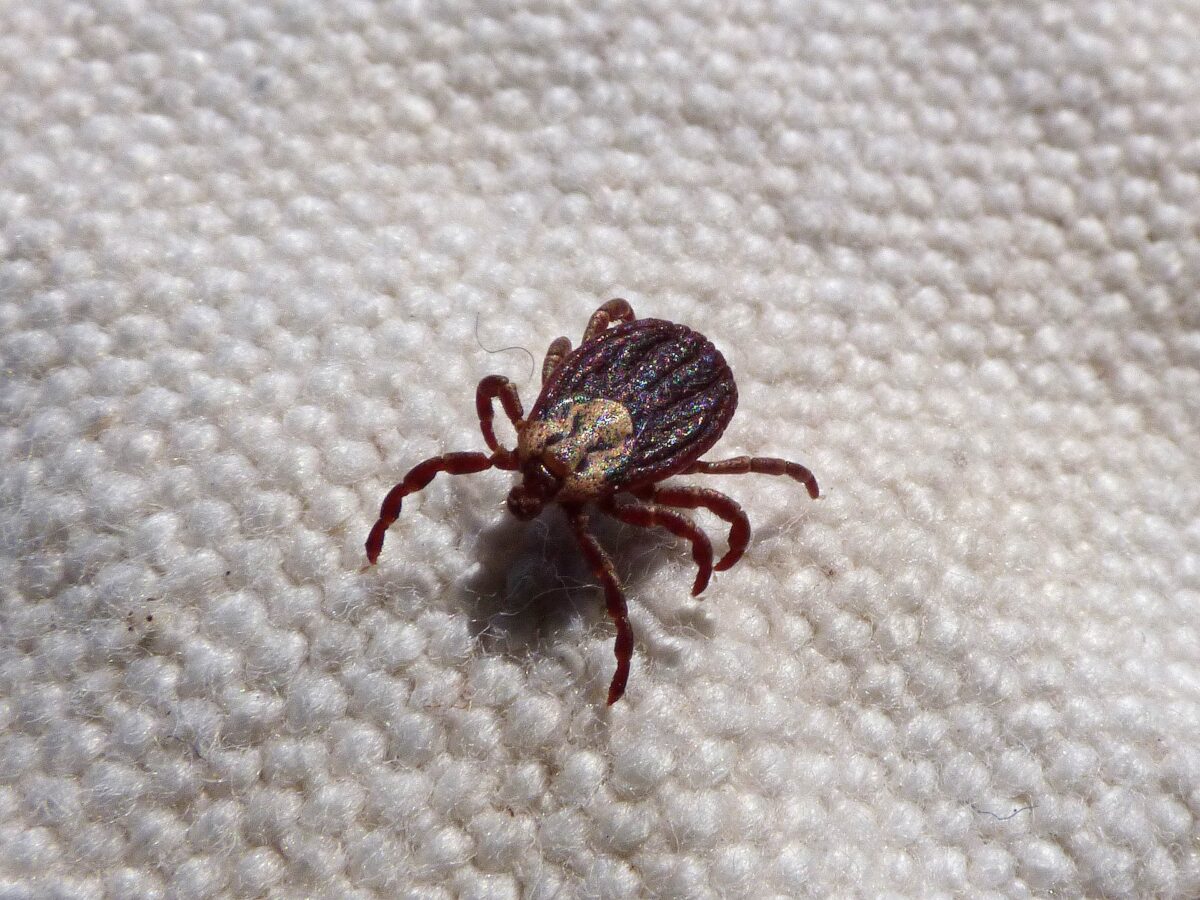Introduction
Imagine a serene hike through the woods, the fresh scent of pine mingling with the earthy aroma of soil. The sun filters through the canopy, casting dappled shadows on the forest floor. But amidst this natural beauty lurks an unseen danger—Lyme disease. For outdoor enthusiasts, health-conscious individuals, and medical professionals alike, understanding Lyme disease is crucial. This blog post will guide you through the essentials of preventing and treating Lyme disease, ensuring that your adventures in nature remain safe and enjoyable.
Understanding Lyme Disease
Lyme disease is a bacterial infection caused by the bacterium Borrelia burgdorferi. It is primarily transmitted to humans through the bite of infected black-legged ticks, commonly known as deer ticks. While Lyme disease is most prevalent in certain regions, it has been reported in many parts of the world.
Symptoms and Early Signs
Recognizing the symptoms of Lyme disease early on is vital for effective treatment. The most common initial sign is a rash called erythema migrans, which often resembles a bull’s-eye. Other early symptoms include fever, chills, headache, fatigue, muscle and joint aches, and swollen lymph nodes. If left untreated, the infection can spread to other parts of the body, leading to more severe complications.
The Importance of Early Detection
Early detection of Lyme disease can significantly improve treatment outcomes. If you suspect you have been bitten by a tick or experience any symptoms after spending time outdoors, seek medical attention promptly. Medical professionals can diagnose Lyme disease through a combination of physical examination, patient history, and laboratory tests.

Preventing Lyme Disease
Dress for Protection
One of the simplest ways to prevent Lyme disease is by dressing appropriately when spending time outdoors. Opt for long-sleeved shirts, long pants, and socks to minimize skin exposure. Tuck your pants into your socks to create a barrier against ticks. Wearing light-colored clothing can also help you spot ticks more easily.
Use Insect Repellent
Applying insect repellent is another effective measure to keep ticks at bay. Look for repellents containing DEET, picaridin, or permethrin. Apply the repellent to exposed skin and clothing, paying special attention to areas such as ankles, wrists, and neck. Reapply as directed on the product label, especially if you are sweating or swimming.
Perform Tick Checks
After spending time outdoors, conduct thorough tick checks on yourself, your children, and your pets. Ticks can be as small as a poppy seed, so be diligent in examining your entire body. Pay close attention to hidden areas like the scalp, behind the ears, under the arms, and around the waist. Promptly remove any attached ticks using fine-tipped tweezers.

Treating Lyme Disease
Seeking Medical Attention
If you suspect you have Lyme disease or have been bitten by a tick, it is essential to seek medical attention promptly. A healthcare professional can evaluate your symptoms, conduct necessary tests, and initiate appropriate treatment. Early diagnosis and intervention can prevent the progression of the disease and reduce the risk of complications.
Antibiotic Treatment
The primary treatment for Lyme disease is a course of antibiotics. The choice of antibiotic and duration of treatment may vary depending on the stage of the disease and individual factors. Commonly prescribed antibiotics include doxycycline, amoxicillin, and cefuroxime. It is crucial to complete the full course of antibiotics as prescribed to ensure the infection is eradicated. Naturopathic treatments like intravenous vitamin C can be added to the protocol to mitigate adverse effects and improve outcomes.
Managing Symptoms
In addition to antibiotic treatment, managing symptoms is an important aspect of Lyme disease care. Over-the-counter pain relievers, such as ibuprofen or acetaminophen, can help alleviate discomfort. Rest, staying hydrated, and maintaining a healthy diet can also support the body’s recovery process. Follow your healthcare provider’s recommendations for symptom management.

Lyme Disease in Outdoor Activities
Safe Hiking Practices
Hiking is a popular outdoor activity among enthusiasts, but it comes with the risk of encountering ticks. To reduce this risk, stick to well-maintained trails and avoid tall grass, bushes, and leaf litter where ticks are commonly found. Stay in the centre of the trail and avoid brushing against vegetation. Consider using tick-repellent clothing for added protection.
Camping Precautions
Camping trips provide an opportunity to immerse yourself in nature, but they also expose you to tick habitats. Choose a campsite in a clear area away from dense vegetation. Keep your tent zipped and avoid bringing ticks inside. Before settling in for the night, perform a thorough tick check to ensure you are tick-free.
Gardening Tips
For health-conscious individuals who enjoy gardening, taking precautions against ticks is essential. Wear protective clothing, including gloves, long sleeves, and pants, to minimize skin exposure. Create a tick-safe zone around your garden by keeping grass short, removing leaf litter, and creating a barrier of wood chips or gravel between wooded areas and your garden.
Debunking Myths About Lyme Disease
Myth 1 Lyme Disease is Rare
Contrary to popular belief, Lyme disease is not rare. It is the most common tick-borne illness in many regions, including North America and Europe. Awareness and preventive measures are crucial for reducing the risk of infection.
Myth 2 Only Certain Ticks Carry Lyme Disease
While some ticks are more likely to carry Lyme disease, it is essential to understand that various tick species can transmit the bacteria. This highlights the importance of practicing tick prevention regardless of the specific tick species in your area.
Myth 3 Lyme Disease is Always Easy to Diagnose
Diagnosing Lyme disease can be challenging, especially in its early stages when symptoms may be nonspecific. Relying solely on symptoms can lead to misdiagnosis or delayed treatment. Laboratory tests and clinical evaluation by a healthcare professional are essential for accurate diagnosis.
The Role of Medical Professionals
Educating Patients
Medical professionals play a vital role in educating patients about Lyme disease. Providing accurate information about prevention, early detection, and treatment options empowers individuals to take proactive measures. Regularly updating patients on tick-borne disease prevalence in their region is also important.
Conducting Thorough Assessments
When patients present with symptoms suggestive of Lyme disease, healthcare providers should conduct thorough assessments. This includes obtaining a detailed patient history, performing physical examinations, and ordering appropriate laboratory tests. Early intervention can prevent complications and improve patient outcomes.
Collaborating with Specialists
In complex cases or instances where Lyme disease has progressed, collaborating with specialists such as infectious disease experts or rheumatologists may be necessary. Multidisciplinary care ensures comprehensive evaluation and management of the disease, addressing both immediate symptoms and potential long-term effects.
Lyme Disease and Public Awareness
Raising Awareness
Public awareness campaigns are essential for educating communities about Lyme disease prevention and early detection. Schools, community centres, and healthcare facilities can host informational sessions, distribute pamphlets, and utilize social media platforms to reach a wider audience. Increased awareness contributes to a more informed and proactive population.
Promoting Research and Advocacy
Supporting research initiatives focused on Lyme disease prevention, diagnosis, and treatment is crucial for advancing medical knowledge. Advocacy for increased funding and legislative support can drive advancements in tick-borne disease research, ultimately leading to improved public health outcomes.
Conclusion
Lyme disease is a significant concern for outdoor enthusiasts, health-conscious individuals, and medical professionals. By understanding the disease, taking preventive measures, and seeking prompt medical attention, we can reduce the impact of Lyme disease on our lives. Remember to dress appropriately, use insect repellent, and perform regular tick checks to stay protected. If you suspect Lyme disease, seek medical attention early for accurate diagnosis and effective treatment. Together, we can enjoy the great outdoors while safeguarding our health. For more information, resources, and personalized advice, consider reaching out to healthcare providers and organizations specializing in tick-borne diseases.
Stay safe, stay informed, and keep exploring the beauty of nature with confidence!








